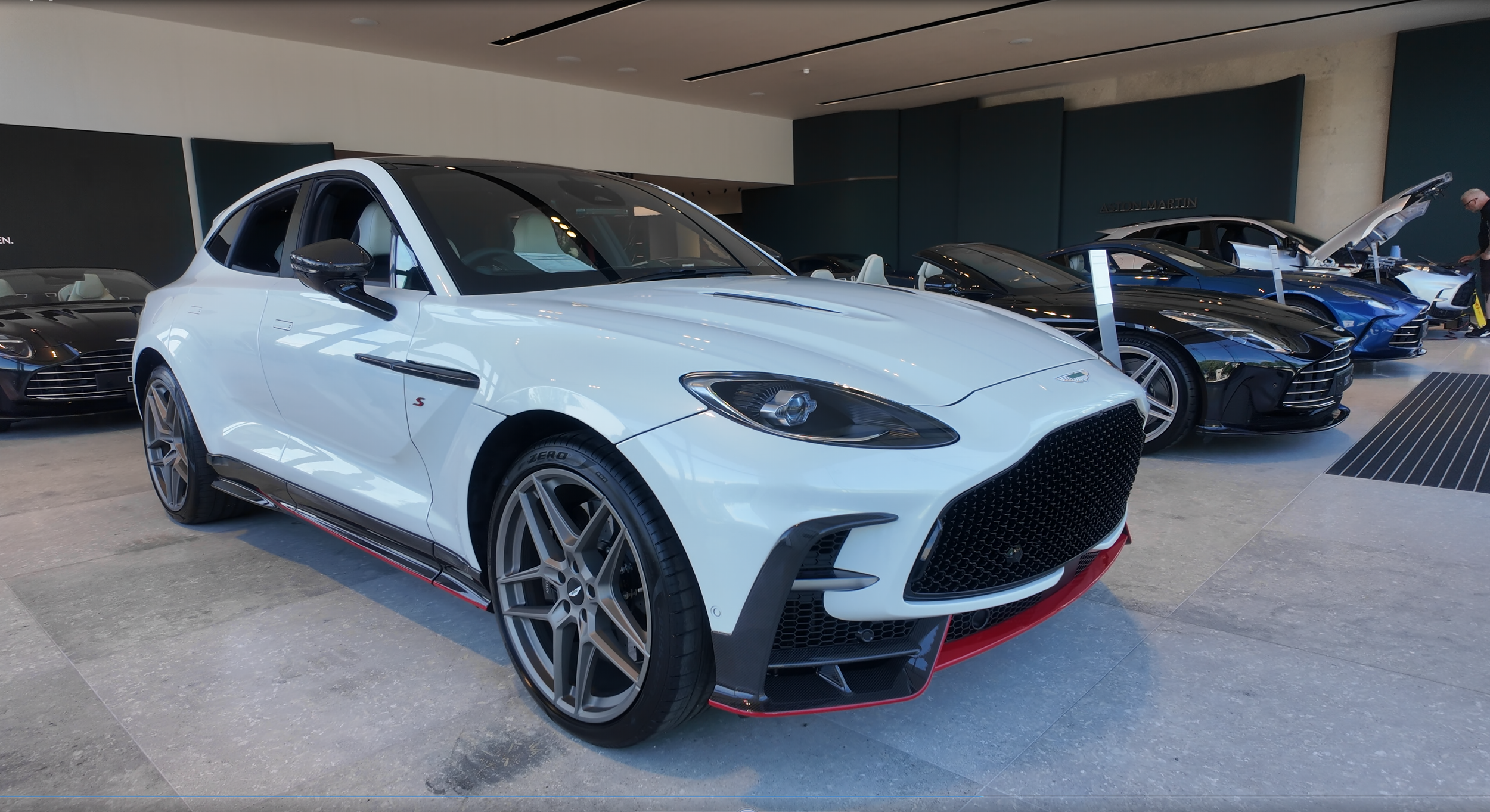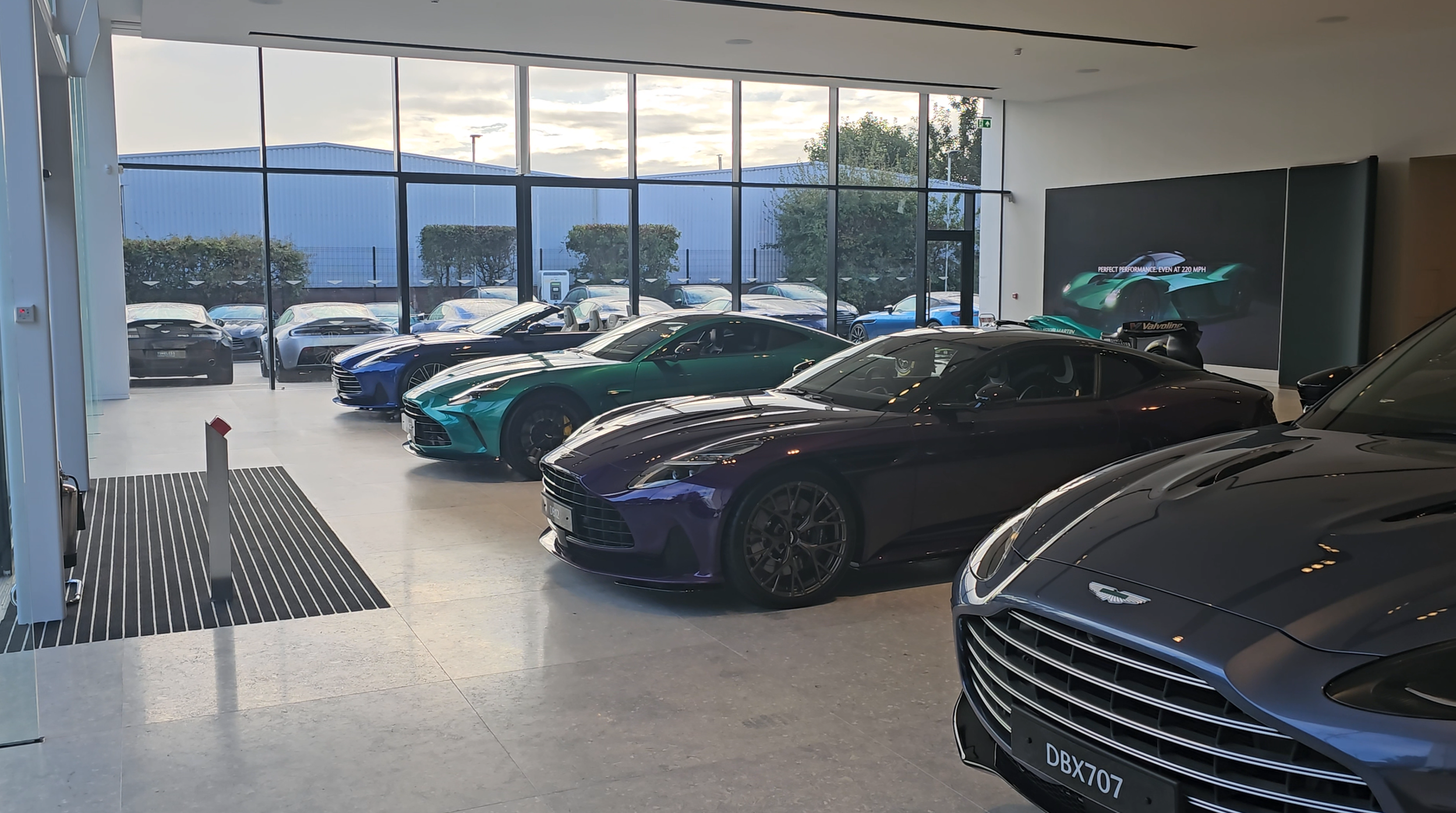
Fuel the Passion Perspective:
My Take on Aston Martin F1 and AML Finances
An article written by Dan Thorpe, Fuel the Passion Creator and Aston Martin Enthusiast - November 2025

How Aston Martin’s Finances and F1 Ambitions Fit Together
Aston Martin is more than a brand — it’s a heritage, a community and a shared passion. And as enthusiasts, we all read the same headlines: financial pressure at Aston Martin Lagonda (AML) on one side, and major growth in the Aston Martin Aramco Formula One team on the other.
This contrast often sparks a big question:
“How can the F1 team invest so heavily while the road-car business faces financial challenges?”
Let’s cut through some confusion with hopefully a clear explanation, as far as I understand it.
This is written from my own, FTP perspective, but grounded in what we can verify.
Aston Martin F1 and AML Are Separate Businesses
One of the most important points to understand, and one that often gets overlooked in casual conversation, is that Aston Martin’s Formula One team and Aston Martin Lagonda are largely separate in funding & operations, though linked by branding and leadership. They may share the same iconic identity and the same racing green presence, but behind the scenes they operate with different structures, different ownership and different financial realities.
Aston Martin Lagonda is the publicly listed road-car manufacturer responsible for the DB12, DB12 Volante, the new Vantage, the DBX and an array of special models, and it reports its financial performance independently. The Aston Martin Aramco Formula One Team, by contrast, is based at Silverstone and is majority owned and funded by Lawrence Stroll’s consortium, having grown from the Racing Point operation following the acquisition of Force India’s assets. However, Lawrence Stroll is Executive Chairman of AML. So even though the F1 team is a separate ownership entity, Stroll is at the helm of AML as well, meaning the leadership overlaps.
Once this separation is understood, the contrast in their financial situations becomes far easier to make sense of, because they are, fundamentally, two distinct entities moving forward with different roles under the same legendary badge.
The F1 Team Is Not Funded by Road-Car Sales
One of the biggest misconceptions in the Aston Martin world is the idea that AML pays for the Formula One team’s wind tunnel, its purpose-built Silverstone campus or the high-profile talent joining its ranks. In reality, AML is not the financial engine behind the F1 operation. The team is funded primarily by Lawrence Stroll’s Yew Tree consortium, supported by major commercial partners such as Aramco and by prize money distributed through the Concorde Agreement.
AML’s involvement is focused on branding rights, a commercial partnership and occasional technical alignment where appropriate, but the heavy infrastructure, investment and salaries are not carried by the road-car business.
It’s the same structure we see elsewhere in the sport: Red Bull Racing does not rely on can sales, McLaren’s F1 budget is not tied to McLaren Automotive’s balance sheet, and Sauber’s team operations are separate from Audi AG.
In modern Formula One, the alignment between a racing team and an automotive brand is often about marketing, identity and strategic presence, not shared funding.
Why Allow the Aston Martin Name on the F1 Team?
The reason Aston Martin chooses to put its name on the Formula One team is simple: there is no greater global branding engine on the planet.
Formula One delivers a level of visibility and cultural relevance that no traditional advertising campaign could ever hope to match. Every race places the Aston Martin name in front of millions of viewers worldwide, reaching younger, broader and more international audiences than any print ad or billboard could ever achieve. It reinforces a modern, technological and performance-driven identity, elevating the brand to the same aspirational tier occupied by long-established titans like Ferrari and Mercedes.
For a specialist manufacturer like AML, operating in a fiercely competitive premium market dominated by larger global players such as Porsche and Mercedes-Benz, this kind of exposure is invaluable.
F1 keeps Aston Martin firmly in the public eye, reminding the world that this historic British marque is not just surviving, it is pushing forward, innovating and fighting for its place on the world stage.
Why the Road-Car Business Faces Financial Pressure
As many of us well know, (as I often find myself talking about it with many people I meet, during various car meets throughout the year) Aston Martin Lagonda’s financial challenges didn’t begin in recent years, they are the result of deep-rooted structural issues that trace back across multiple ownership eras. The company has carried legacy debt for a long time, and building ultra-low-volume, hand-crafted performance cars is inherently expensive. Every new Aston Martin requires an enormous engineering and development investment, yet the production numbers are tiny compared with giants like Porsche or Mercedes. That imbalance limits economies of scale and means that Aston is far more exposed to global economic shifts, luxury-market slowdowns and supply-chain interruptions.
On top of that, the entire automotive world is moving toward hybrid and electric technology, and for a small manufacturer like AML, that transition is financially heavy. Bringing new powertrains, updated platforms and next-generation electronics to market demands capital, often more capital than the business can generate in the short term. When you combine these long-standing pressures with timing challenges around new model launches, you begin to understand why AML’s finances can look strained even when its products are strong.
Recent financial filings back this up. Wholesale volumes have occasionally fallen short of targets, earnings guidance has been revised downward, and certain quarters have shown negative free cash flow. From the outside, headlines tend to exaggerate these points, but the context matters: AML is in the middle of a planned transformation, not a collapse.
And despite the pressure, the product side of Aston Martin has never looked stronger. The DB12 arrived to significant global praise and genuinely pushed the brand forward. The new Vantage has launched with real confidence, supported by additional variants such as the Vantage S that broaden appeal and strengthen the performance image. The DBX continues to play a vital role in the luxury SUV sector, and halo products like Valour, and the extraordinary Valkyrie serve as rolling proof of Aston’s ambition and engineering reach.
In short, Aston Martin Lagonda is not a company in freefall, it is a company rebuilding itself while carrying the weight of its past. The full product range has now been refreshed, the brand direction is clearer than it has been in years, and the foundations for future stability are being laid. This is a transition phase, not an endpoint. And like many chapters in Aston Martin’s history, it will ultimately be defined by resilience, evolution and passion.
Where F1 Fits Into AML’s Long-Term Strategy
When Lawrence Stroll took the helm at Aston Martin, he made his intentions unmistakably clear. His vision is to turn Aston Martin into “the world’s greatest British ultra-luxury performance brand,” a statement that sets the tone for a far-reaching transformation. Central to that vision is Formula One, not as a marketing gimmick or a short-term splash, but as a long-term strategic pillar that supports the future of the entire Aston Martin identity.
Formula One gives Aston Martin something few brands can buy: global desirability on a grand stage. Every race weekend places the name in front of millions of viewers worldwide, modernising the brand image and connecting Aston Martin with the cutting-edge technology, innovation and engineering excellence that F1 represents. In markets where Aston Martin is still growing or newly emerging, F1 acts as a powerful calling card, instantly elevating recognition and aspiration.
The halo effect from Formula One mirrors what Ferrari and Mercedes have benefitted from for decades, a virtuous cycle where motorsport pedigree lifts the image of the road cars, and the cars reinforce the credibility of the motorsport effort. It also plays a quiet but important role in attracting world-class engineering talent. Even if the crossover between F1 and road cars isn’t direct, the culture of high performance, precision and innovation naturally influences the broader brand.
Crucially, the financial weight of this ambition does not sit on AML’s shoulders. Because the F1 team is funded by Stroll’s consortium and its commercial partners, the motorsport programme doesn’t drain the car company’s resources. Instead, it strengthens the marque at a global level while allowing AML to focus on its core mission: building exceptional cars, rebuilding its financial foundations and steering the brand toward a more stable and competitive future.
In essence, F1 isn’t a distraction for Aston Martin, in my opinion, it’s a catalyst. It amplifies the brand, energises the future and brings the kind of worldwide presence a company of Aston Martin’s size could never afford through traditional means.
Where AMOC Fits Into This; Heritage, Community, and Official Recognition
There is another side to the Aston Martin story that often goes unspoken, yet it remains absolutely central to the health of the brand: the community. And at the heart of that community sits the Aston Martin Owners Club, the principal owners’ club officially recognised by AML. That terminology matters, because it reflects the depth of the relationship and the respect shared between the club and the manufacturer.
AMOC plays a unique role within the Aston Martin ecosystem. It is the official heritage and community partner, bridging the gap between Aston Martin’s glorious past and its rapidly evolving future. Whether you own a cherished DB6, a new Vantage, a DBX, or simply dream of one day joining the family, AMOC acts as the connective tissue that binds generations of owners together. It preserves the marque’s cultural and historical depth, curates the stories that define Aston Martin’s character, and represents the real-world passion that numbers and financial statements simply cannot capture.
This relationship also provides something invaluable to AML: genuine feedback, engagement and insight from the people who care most about the brand. The club’s events, gatherings and concours fields aren’t just celebrations, they are living, breathing reflections of the loyalty and enthusiasm that Aston Martin inspires across decades.
And when viewed alongside F1, the picture becomes even clearer; Formula One generates global excitement and modern prestige. AML focuses on creating exceptional cars that carry the brand forward. But AMOC safeguards the soul, the human, emotional side of Aston Martin that no marketing campaign can replicate. Together, they form a powerful three-pillar ecosystem: F1 creates the spotlight, AML builds the product, and AMOC carries the heritage and community that makes Aston Martin truly special.
Final FTP Thoughts
At first glance, it’s easy to look at the financial headlines surrounding Aston Martin Lagonda and imagine a brand in turmoil, especially when placed beside the bold, ambitious rise of the Aston Martin Aramco Formula One team. But when you step back and understand the true structure and strategy behind it all, a very different picture emerges, one that is far more cohesive, far more inspiring, and far more deserving of pride.
The Formula One team is privately funded and fuelled by a vision to elevate Aston Martin onto the world stage. Meanwhile, AML is steadily rebuilding the commercial foundations of the road-car business, supported by a refreshed model line-up that is already turning heads. These are not conflicting forces; they are complementary ones. They share the same badge, the same heritage and the same ambition, each contributing to the resurgence of one of the most evocative British brands ever created.
And at the centre of this ecosystem, carrying the heart and soul of the marque, stands the Aston Martin Owners Club, the principal owners’ club officially recognised by AML. AMOC connects the past, present and future of Aston Martin in a way no corporation ever could. It is where stories are preserved, friendships are formed and the emotional heartbeat of the brand continues to thrive. Heritage, community, passion, all of it lives here.
When you bring these elements together; a revitalised range of road cars, a Formula One team climbing with purpose, and a strong, officially recognised owners’ club, you begin to see that we are living through a uniquely exciting chapter in Aston Martin’s history. A chapter shaped not by struggle, but by transformation. Not by conflict, but by alignment. Not by fear, but by ambition.
Yes, challenges remain. They always have. That is part of Aston Martin’s story, a story defined by resilience, reinvention and an unbreakable sense of identity. Through every era, one constant has endured: the passion of the people who love this marque.
And for enthusiasts like us, that passion is exactly what keeps the legend alive. It fuels the community, inspires the engineers, drives the brand forward and ensures that Aston Martin remains what it has always been, a shining symbol of British craftsmanship, courage and soul.
Recently, on the Chris Harris & Friends podcast, they posed a brilliantly provocative question: “Is Aston Martin an unkillable brand?”
And honestly, standing back and looking at the passion, the heritage, the resilience and the sheer willpower that has carried this marque through more than a century of highs, lows and reinventions, I can’t help but smile. If any brand deserves to be called ‘unkillable’, it’s Aston Martin. Every era has proved the same truth: this company bends, it evolves, it battles… but it never breaks.
And for my part? I truly hope that spirit burns forever.
This editorial reflects my personal interpretation as an Aston Martin enthusiast
and is not affiliated with or endorsed by Aston Martin Lagonda, Aston Martin F1 Team or Aston Martin Owners Club (AMOC)







